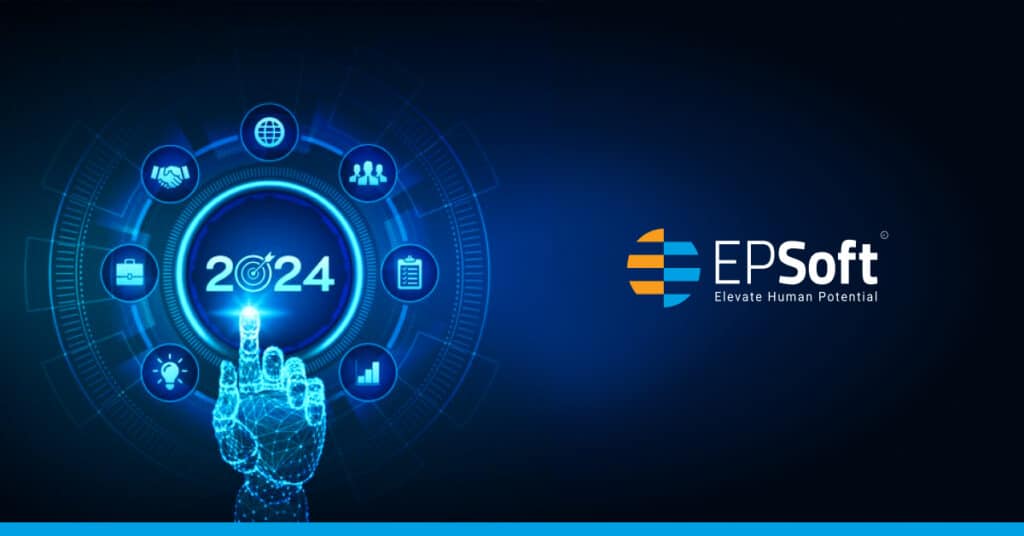In the dynamic sphere of technology, Robotic Process Automation (RPA) is undergoing constant evolution, ushering in transformative changes for businesses. The intricate interplay of automation and efficiency is redefining operational paradigms, and as we enter 2024, the RPA landscape is poised for revolutionary developments that will leave a lasting impact on the world of automation.
As we navigate the ever-changing terrain of technological innovation, it becomes imperative to explore the upcoming trends that will shape the trajectory of RPA in the coming year. In this blog post, we will take a closer look at the top five defining trends in RPA that are anticipated to unfold in 2024, providing insights into the future of automated processes and their profound implications for various industries.
Understanding Robotic Process Automation (RPA):
Amidst the spectrum of technological advancements, artificial intelligence (AI) and machine learning (ML) stand out prominently. Within the realm of AI, one distinctive subset capturing attention is Robotic Process Automation (RPA). Positioned as a results-focused AI implementation, RPA is set to be a focal point in 2024, seamlessly integrating with other cutting-edge technologies.
Top 5 RPA Trends in 2024:
1. RPA’s Soaring Market Impact:
RPA is poised to become a billion-dollar industry, solidifying its place in IT managers’ toolkits. Forecasts from Forrester predict an expansion from $250 million in 2016 to a staggering $11 billion in 2027. Grandview research goes even further, estimating the RPA automation market to reach $25.56 billion by 2027, showcasing the escalating impact of RPA on the global market.
2. The Synergy of Manual and Digital Efforts:
Contrary to dystopian fears of automation replacing human roles, RPA’s future envisions a collaborative partnership between people and machines. While RPA efficiently handles repetitive tasks, it necessitates human intervention for optimal functionality. The collaboration not only preserves jobs but also opens new career opportunities, creating a balanced ecosystem.
3. RPA’s Surge Amidst the Pandemic:
The impact of the COVID-19 pandemic has accelerated the demand for RPA. As businesses adapt to remote work conditions and reduced staff, RPA emerges as a crucial ally in maintaining operational efficiency. Even post-pandemic, RPA is expected to play a vital role in sustaining work-from-home models, providing efficiency, accuracy, and automation that can be indispensable for businesses navigating uncertainty.
4. Intelligent Process Automation (IPA) Takes Center Stage:
Intelligent Process Automation (IPA) emerges as a significant trend, combining the automation capabilities of RPA with the potential of artificial intelligence, machine learning, and process redesign. This fusion enables automation processes to evolve and improve over time, marking a paradigm shift in how businesses leverage RPA. Estimates suggest that investments in IPA and related technologies will soar to $232 billion by 2025, showcasing the growing importance of smart automation.
5. Hyper Automation Redefines Efficiency:
Hyper Automation, an advanced iteration of RPA, integrates artificial intelligence, machine learning, and existing RPA trends to process vast volumes of data seamlessly. This sophisticated approach optimizes business processes across diverse areas, automating end-to-end workflows on a larger scale. As businesses increasingly adopt automation, Hyper Automation emerges as a key resource for automating complex tasks and enhancing productivity.
The year 2024 holds great promise for the world of Robotic Process Automation. As organizations navigate the evolving landscape, these seven trends will define the future of RPA, shaping how businesses operate, innovate, and stay competitive in an increasingly automated world. Embracing these trends will not only drive efficiency but also pave the way for a new era of collaboration between humans and machines, ultimately propelling businesses towards unprecedented success in the digital age.

